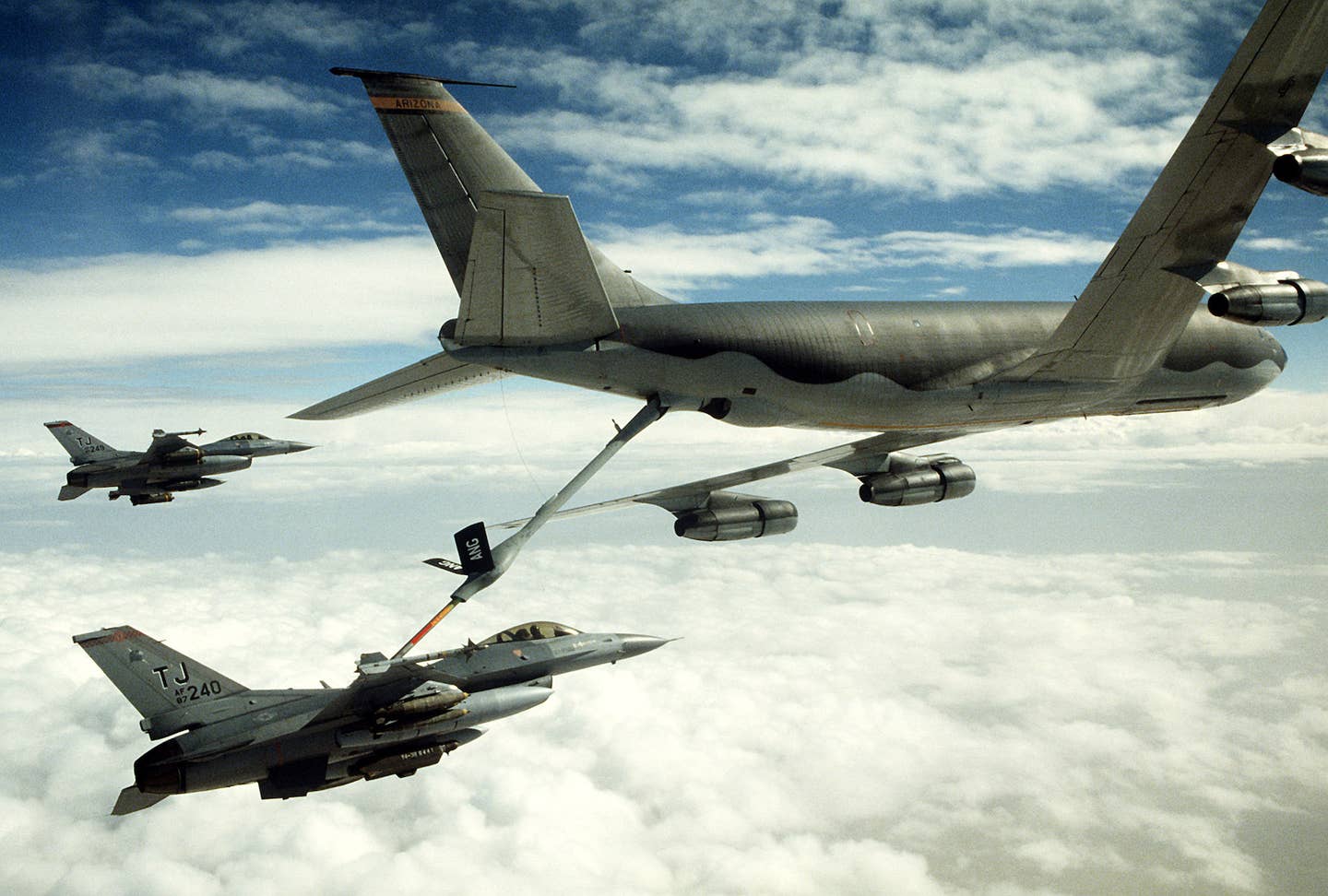On December 27, 1992, an F-16 USAF pilot engaged in air combat during Operation Southern Watch (OSW) and achieved the first-ever kill with the AIM-120 Advanced Medium-Range Air-to-Air Missile (AMRAAM). The year 2022 commemorated the 30th anniversary of that historic moment.
TRIPLE KILL! Russian Su-35S Fighter Shoots Down Three Ukrainian Military Aircraft In A Single Patrol
Gary “Nordo” North, then a lieutenant colonel in the United States Air Force, made history in 1992 when he became the first USAF pilot to achieve an air-to-air win in an F-16 and the first kill with the AIM-120 AMRAAM.
Amid a tense period between Iraqi and coalition troops, North downed an Iraqi MiG-25 Foxbat-E with the relatively new F-16 and AIM-120A missile combination. As a result, North’s F-16D was given the moniker “MiG-Killer,” cementing his place in history.
Throughout Operation Southern Watch (OSW), which lasted from August 1992 to March 2003, American, British, and, up until 1998, French forces monitored and patrolled the skies over southern and south-central Iraq.
This air patrol operation was carried out to ensure that Iraq complied with United Nations Security Council Resolution 688 (UNSCR 688), passed on April 5, 1991.
Iraqi rotary and fixed-wing aircraft were not allowed to fly south of the 32nd and later 33rd parallels, according to UNSCR 688. After the Gulf War, it became evident that Saddam Hussein’s air force would not follow UNSCR 688.

In reaction to UN sanctions against the nation, Iraqi radar surveillance systems, surface-to-air missiles (SAMs), and anti-aircraft artillery attacked coalition forces, raising the risk that Iraqi aircraft would eventually violate the no-fly zone.
On December 27, 1992, the concerns about Iraqi planes violating the no-fly zone materialized, resulting in the famous encounter between a USAF F-16 and an Iraqi MiG-25.
How Did The AIM-120 Achieve Its First Combat Kill
The morning of December 27 for North was quite ordinary. He commanded a group of four USAF F-16s on a regular flight when he learned that an Iraqi aircraft had violated the no-fly zone at about 10:42 a.m. local time.
The F-16 squadron intercepted a transmission from a squadron of F-15 Eagle fighters to an E-3 Sentry Airborne Warning and Control System (AWACS), confirming that an Iraqi fighter had breached the parallel.
Due to low gas supplies, the F-15s were forced to retreat from the area while pursuing the Iraqi fighter, which one F-15 pilot recognized as a MiG-25 interceptor. North and his wingman refueled swiftly from the KC-135. After that, the two pilots flew quickly towards southern Iraq, leaving the third and fourth F-16s to refuel fully.
AWACS quickly informed North and his wingman that a second Iraqi aircraft was approaching the no-fly zone and directed the two F-16s to engage it. A third Iraqi aircraft were also spotted, and AWACS instructed North to intercept it.

However, this aircraft crossed the no-fly zone about 30 miles west of the two F-16s, but it turned around and flew back to safety before being engaged. Soon after, AWACS informed North that a fourth Iraqi aircraft was en route to the no-fly zone.
However, as they attempted to intercept, two Vipers were tracked by an Iraqi SAM location. The other two F-16s had finished refueling at this point, and North gave the order for them to fly north as quickly as possible.
North started putting together a strategy to shoot down the plane. He made a tactical deviation to the north to ‘bracket’ the Iraqi aircraft between all four F-16s and the 32nd parallel.
“Someone was going to die within the next two minutes,” North noted, “and it wasn’t going to be me or my wingman.” After spotting one Iraqi fighter, North identified it as a MiG-25 fitted with AA-6 Acrid radar-guided missiles.
When North asked for approval to fire, he was given the command, “CLEARED TO KILL, CLEARED TO KILL, HE’S A BANDIT, BANDIT!”
North then targeted the MiG-25 at a range of about three nautical miles, fifteen degrees nose high, and fifteen degrees right bank, and fired one of his F-16’s two AIM-120 missiles, taking out the Iraqi aircraft.
“I saw three separate detonations,” he recalled in 1998, “the nose and left wing broke instantly, and the tail section continued into the main body of the jet, and finally one huge fireball.”
Nevertheless, AIM-120 missiles and F-16s together significantly advanced air combat capability. Early in the 1990s, the AIM-120 was introduced, and it quickly proliferated throughout the USAF’s F-16 fleet.
- Contact the author at ashishmichel@gmail.com
- Follow EurAsian Times on Google News




